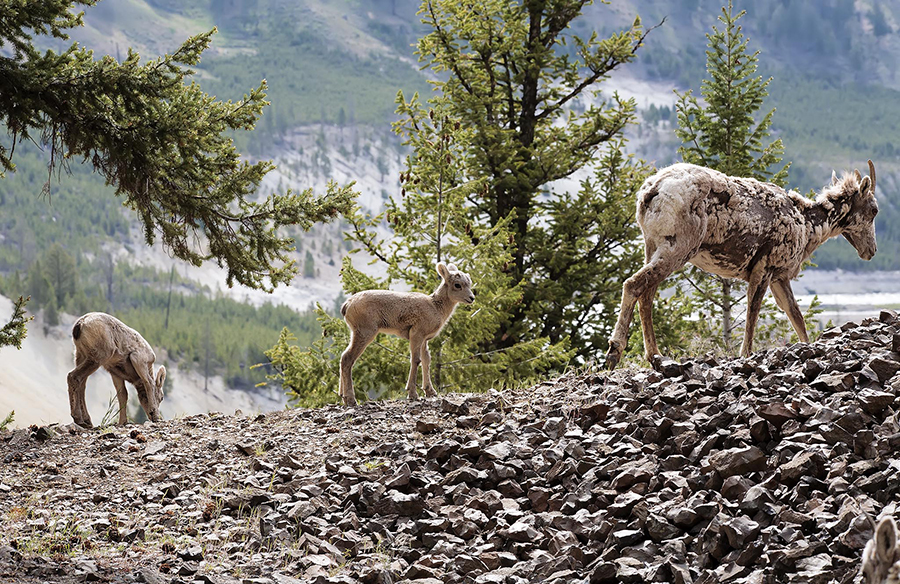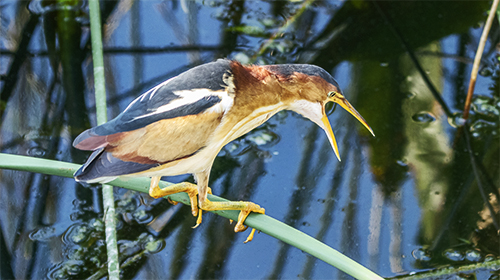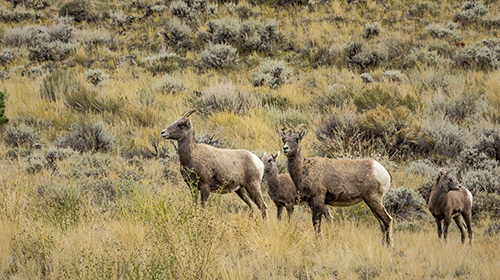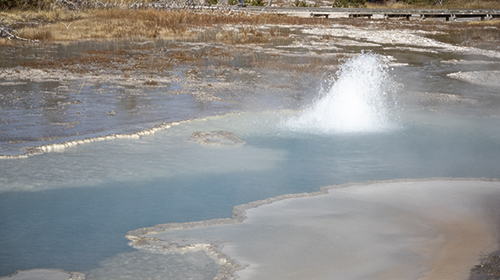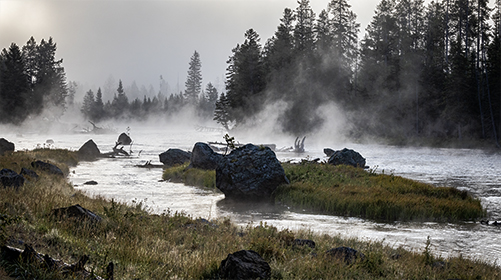Rocky Mountain Bighorn Sheep
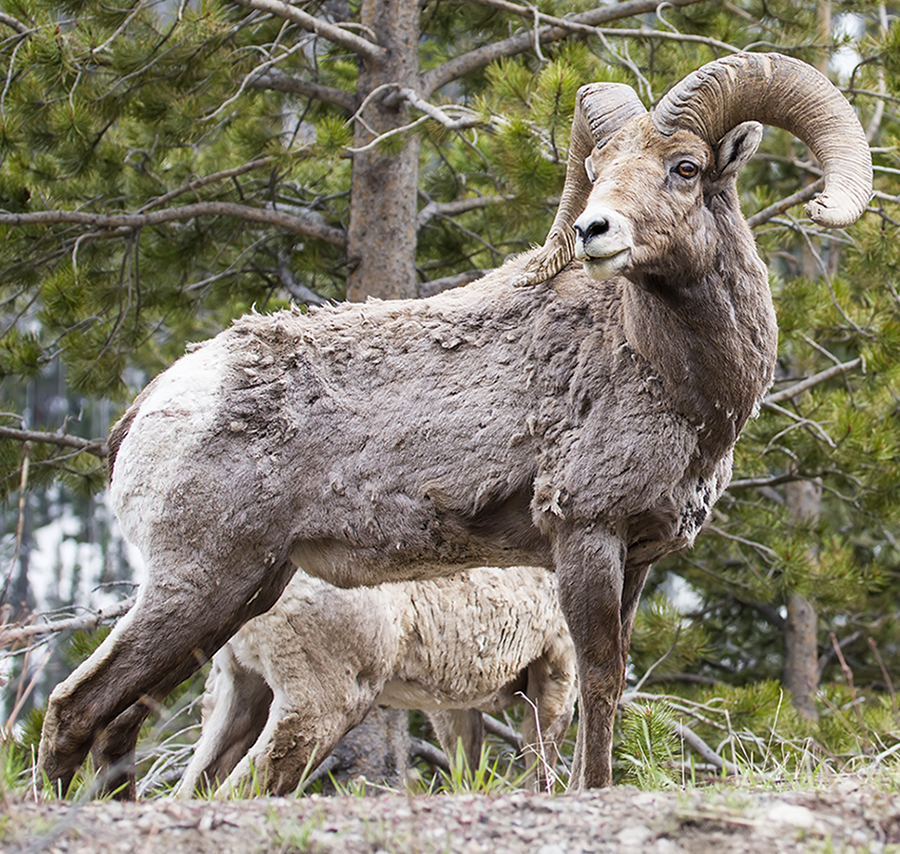
It never fails when people see bighorn sheep; they are fascinated, be it the horns on the rams, the ewes, and lambs, or a lamb jumping over the rocks of their home. Rocky Mountain Bighorn sheep are found in the Rockies of North America from British Columbia to Arizona.
Except during mating season, you will find the rams or males in small groups and the ewes, females, and lambs in separate groups.
Rams can weigh up to 319 pounds (144.7 kg), while females are about half that weight.
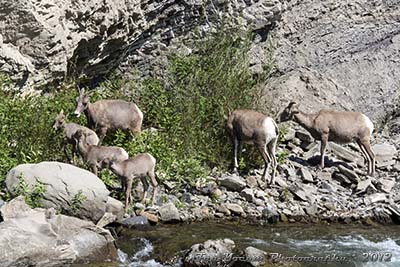
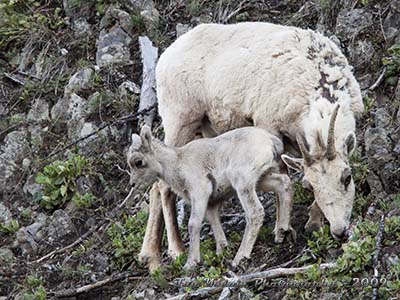
Ewes can produce lambs between 2 and 16 years of age. Mating begins in November. Gestation is 6 months, and usually has one lamb yearly. Yellowstone lambs are born in May or June.
Before giving birth, the ewe will find a remote area and will stay there until the lamb is several days old. At that point, they rejoin the herd. In just days, the newborn is jumping over rocks and climbing the side of mountains
Lambs are weened by four to six months. The ram lambs stay with the ewes until two to four years of age. Female lambs stay with their herd for life.
When looking at adult rams, the most impressive thing you see is their C-curved horns. Being horns, they are never shed by the ram. The horns continue to grow from the head outward. If a tip gets damaged in a horn-bashing clash, the tip never "heals." A damaged horn is said to be "broomed."
The bigger the C-curve, the older the ram.
The horns on an adult male can be 8-12% of his total body weight. 25.5 or 41.5 pounds (11.6 - 18.8 kg). A complete set of horns takes 7-8 years to grow.
Females grow horns, but the horns are more petite and slender, never form a "C," and stop growing at about age 4 or 5.
Until three years of age, the young ram looks like an ewe; after that, his horns start to develop the recognizable "C" shape.
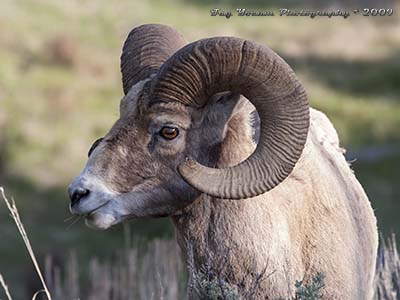
Rocky Mountain Bighorn Sheep is one of Yellowstone's seven native ungulates or hooved animals.
The most recent count of the Bighorn in Yellowstone was reported in 2018. At that time, 345 sheep were found in the Greater Yellowstone northern area, with 131 animals within the park's defined boundaries. The average life span for males is 9-12 years, and females are 10-14 years.
The average life span for males is 9-12 years and females are 10-14 years.
What is the difference between horns and antlers? To find out, check out this page.
